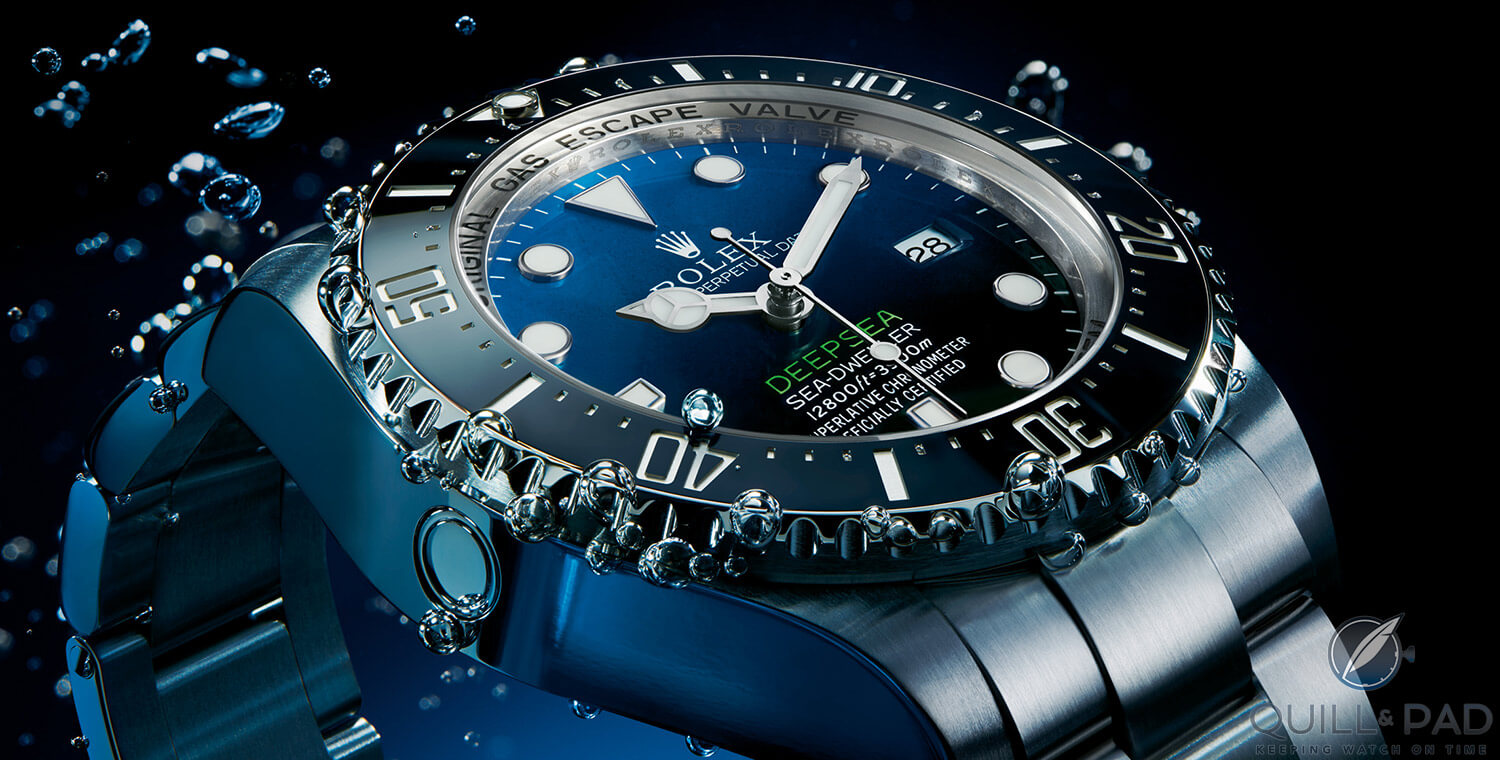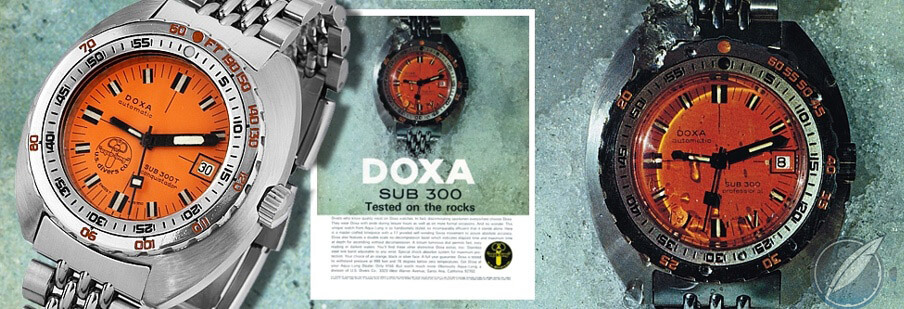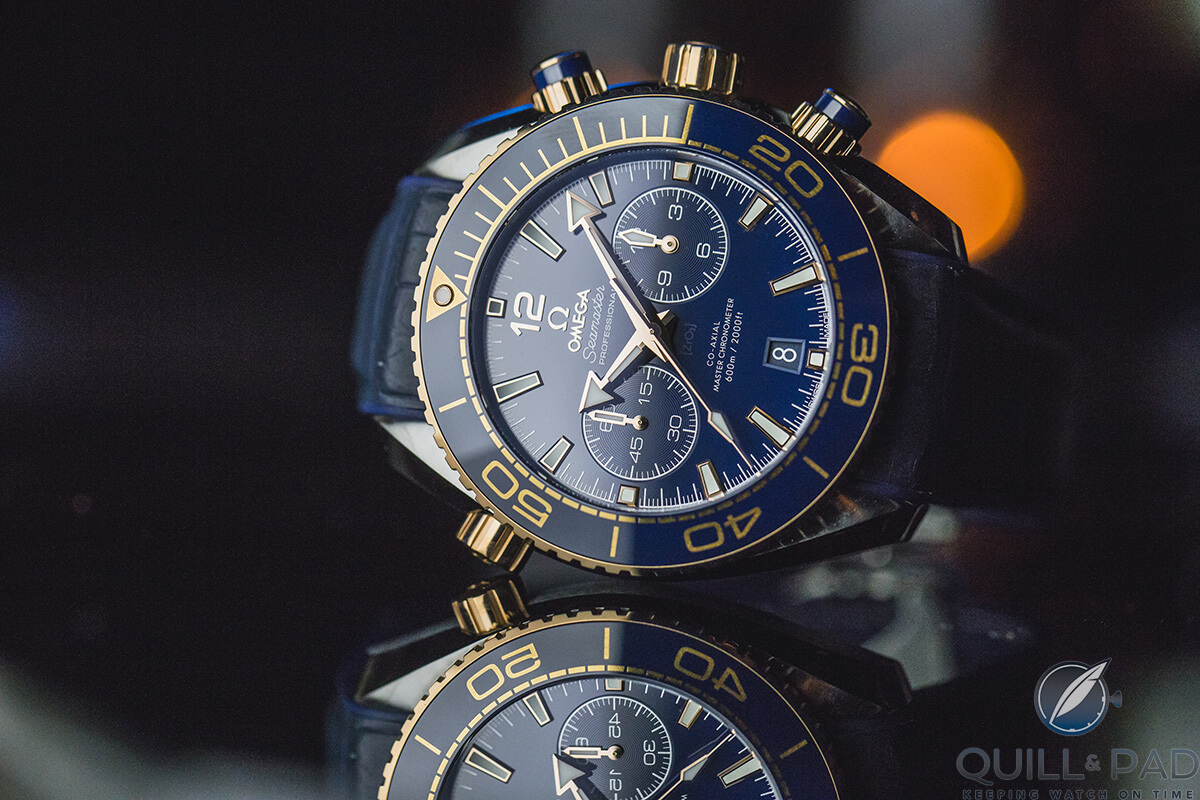Deeper, Further, Faster: Why do Some Dive Watches have Helium Escape Valves?
by Ashton Tracy
Humans have long had a fascination with the depths of the ocean, striving to go ever deeper, ever further, and ever faster by pushing the limits of the human body, technology, and advancing modern science.
But like all things, we humans are faced with limits.
Deep-sea divers used to face these limits when underwater for long periods. During time underwater tissue absorbs gases, and the time needed for ascension to the surface can take many hours, even when only exposed to certain depths for a few minutes.
Lengthy decompression times posed a problem for divers needing to spend prolonged periods of time at depth; and every decompression comes with risks as well. A solution was needed.
In 1957 Dr. George F. Bond, a United States Navy physician, began the Genesis Project, a medical experiment to study the effects of exposing animals to various breathing gases at different underwater depths to observe the effects on their bodies.
The experiment proved that bodies reach a saturation point and no more time to decompress is needed once this has been reached, regardless of the time spent underwater. Throughout the project, different mixes of gases at different depths were used and it was observed that if the majority of the breathing gas was helium, all the subjects survived at varying depths for different lengths of time.
In 1962 human trials began at a gas mix of 21.6 percent oxygen, 4 percent nitrogen and 74.4 percent helium. With these trials proving successful, a world of opportunity had now opened up with divers being able to live and work for periods of 30 days at depths of 600 feet.
This somewhat unknown experiment changed the horological landscape forever, producing one of the most confusing and recognizable features of dive watches today: the helium escape valve.

Rolex Oyster Perpetual Sea-Dweller Deepsea D-Blue with helium escape valve
Sealab
After the success of the Genesis project, the United States Navy launched Sealab, which was also headed by Dr. Bond. Sealabs (I, II, and III) were experimental underwater habitats developed by the U.S. Navy in the 1960s to prove the viability of saturation diving as well as humans living in isolation for extended periods of time. Sealab I ran into some technical problems due to an approaching storm, with the experiment canceled after 11 days. Sealab II and Sealab III soon followed with more successful results.
These underwater habitats were pressurized living quarters for divers, providing a mix of breathing gas composed mainly of oxygen, nitrogen, and helium. The Sealabs included a sleeping area, bathroom, and living area and ensured that divers could spend multiple days at a time underwater performing all necessary tasks without having to make time-consuming, dangerous ascents on a regular basis.
Helium escape valve
During ascents in diving chambers, it was noted that from time to time the crystal from one of the divers’ watches would pop off with a loud bang.
This was attributed to helium buildup in the case, which makes its way in via diffusion by penetrating the rubber gaskets.
As the diver ascends in the chamber, the gas pressure outside of the watch decreases, with the pressure inside of the watch remaining higher. Once the difference is too great, the pressure buildup causes the crystal to pop off the watch because crystals were generally simply friction fitted on dive watches of the 1960s.
Rolex decided to tackle the problem head-on and introduced what it called the gas escape valve, a one-way pressure-release valve that allowed the helium to escape the case once the pressure difference reached a certain amount.
This valve was incorporated into the now-loved Rolex Sea-Dweller. On the Sealab III mission, Rolex Sea-Dwellers equipped with gas escape valves were issued to the diving team, thus solving the problem of helium entering the case.

Advertisement for the Doxa Sub 300T with helium escape valve
At the same time Rolex was developing its gas escape valve, the Doxa watch brand was also involved with its own project. In 1964 Doxa teamed up with several professional divers, one being Claude Wesly, who was part of the legendary Jacques Cousteau dive team, having taken part in the Precontinent I, I, and III dive missions similar to Sealab carried out by Cousteau and his team.
——————————————————————————————–
——————————————————————————————–
While Rolex was focused solely on commercial applications, Doxa’s goal was making an affordable dive watch for recreational and professional divers.
Leave a Reply
Want to join the discussion?Feel free to contribute!





US saturation diving researcher & diver George F Bond MD and T. Walker Lloyd met at a diving trade show in 1967. During their conversation about saturation diving, Barth mentioned a fascinating phenomenon Lloyd had never heard of.
When saturation divers went through decompression after weeks at depth, their watches literally exploded, the reason being that helium atoms were so tiny, they were able to penetrate the watch cases during prolonged exposure. Once saturation divers started the process of decompression, the helium inside the watches could not escape fast enough and became trapped caused the weakest part of the watches, the crystals, to pop off. The divers learned quickly how to deal with this issue. Before decompression, they simply unscrewed their crowns. If they forgot, however, their watches were damaged.
An automatic solution was needed, and Barth had already figured out what to do. His idea was simple yet brilliant: To install a tiny one-way helium release valve to allow accumulated helium gas to exit the watch in a controlled fashion.
Lloyd seized the moment and shared the acquired knowledge with Rolex’ René-Paul Jeanneret, member of the Rolex
board and a passionate diver himself, was fascinated by Lloyd’s knowledge on saturation diving, so much so, he offered him a job as Oceanographic Consultant for Rolex in order to keep in touch with the latest developments.
Lloyd’s role in the development of the valve was mentioned in one of Rolex’s oldest Sea-Dweller advertisements.
[3][2]
Thank you for sharing that interesting bit of history.
Regards, Ian